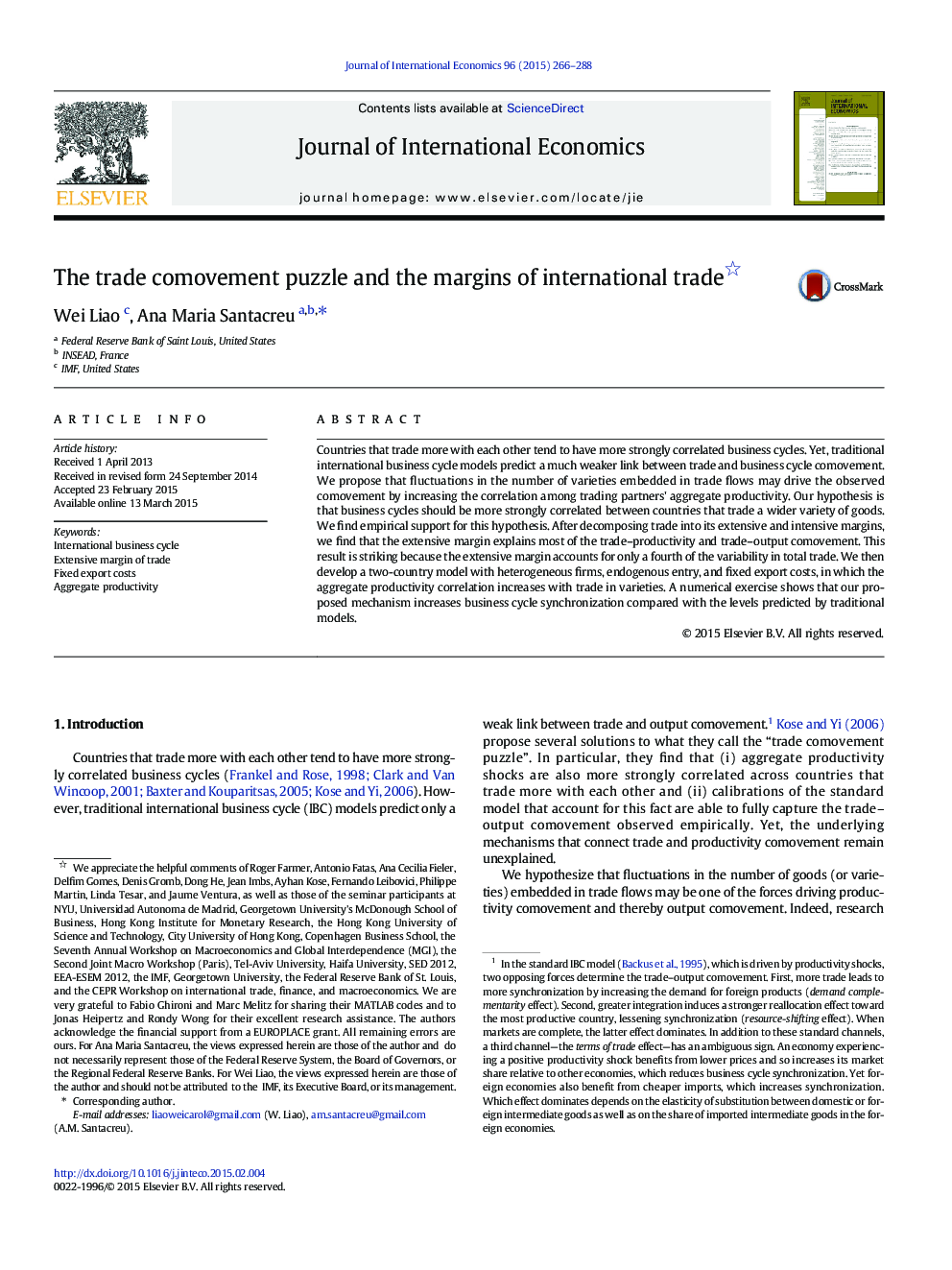| Article ID | Journal | Published Year | Pages | File Type |
|---|---|---|---|---|
| 962920 | Journal of International Economics | 2015 | 23 Pages |
Abstract
Countries that trade more with each other tend to have more strongly correlated business cycles. Yet, traditional international business cycle models predict a much weaker link between trade and business cycle comovement. We propose that fluctuations in the number of varieties embedded in trade flows may drive the observed comovement by increasing the correlation among trading partners' aggregate productivity. Our hypothesis is that business cycles should be more strongly correlated between countries that trade a wider variety of goods. We find empirical support for this hypothesis. After decomposing trade into its extensive and intensive margins, we find that the extensive margin explains most of the trade-productivity and trade-output comovement. This result is striking because the extensive margin accounts for only a fourth of the variability in total trade. We then develop a two-country model with heterogeneous firms, endogenous entry, and fixed export costs, in which the aggregate productivity correlation increases with trade in varieties. A numerical exercise shows that our proposed mechanism increases business cycle synchronization compared with the levels predicted by traditional models.
Related Topics
Social Sciences and Humanities
Economics, Econometrics and Finance
Economics and Econometrics
Authors
Wei Liao, Ana Maria Santacreu,
